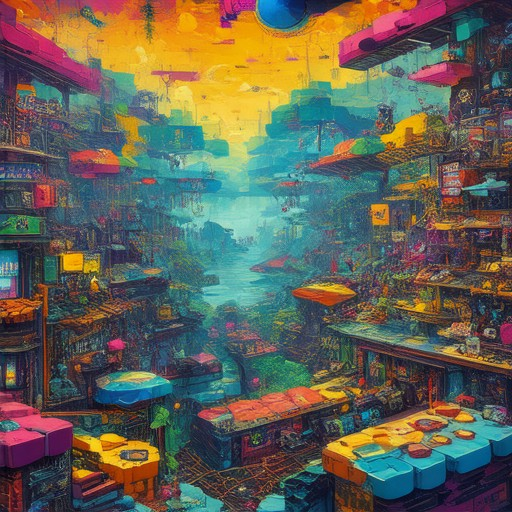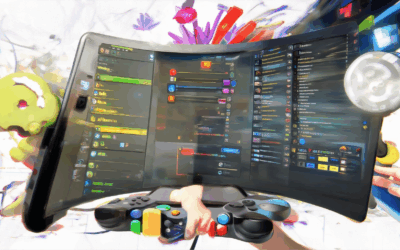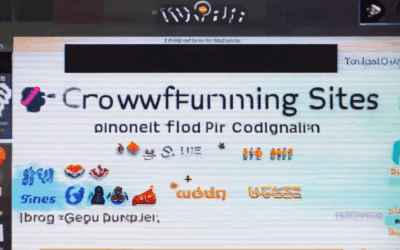When building an indie game, selecting the right assets is crucial to both the visual appeal and functionality of your project. Whether you’re working on a 2D platformer, a 3D RPG, or a mobile puzzle game, having access to high-quality and versatile assets can significantly impact your game’s success. From character designs and environments to animations and sound effects, the choice of assets plays a pivotal role in shaping your game’s identity. However, navigating the vast landscape of game asset stores and ensuring your project stands out among competitors requires careful planning and research. In this comprehensive guide, we’ll explore everything you need to know about identifying and utilizing the best assets for indie games, from finding reliable platforms to creating your own custom assets. By mastering these strategies, you’ll be well-equipped to develop a game that not only looks professional but also performs exceptionally well across multiple platforms.
Key Takeaways
- Develop a Strong USP: Differentiate your indie game through unique elements like story, gameplay, or art to stand out in the market.
- Engage Communities Actively: Build loyalty and support by interacting with fans across forums, social media, and live events.
- Leverage Multiple Marketing Channels: Combine strategies such as social media, influencer partnerships, and SEO to enhance visibility.
- Form Strategic Alliances: Collaborate with other indie developers and influencers for cross-promotion and shared resources.
- Adapt to Market Changes: Continuously monitor performance metrics and adjust marketing and development strategies to stay competitive.
- Balance Costs and Revenues: Manage expenses carefully and explore diverse monetization methods to maximize profitability.
- Encourage Viral Sharing: Implement referral systems and gamification elements to boost word-of-mouth promotion.
- Optimize for Search Engines: Use targeted keywords and high-quality content to improve your game’s search engine ranking.
- Understand Financial Dynamics: Strategically price your game considering platform choices and revenue models to achieve maximum impact.
- Stay Informed About Industry Trends: Keep up with technological advancements and market shifts to position your game effectively.

How to Make Your Indie Game Successful
To make your indie game successful, follow these organized steps:
- Develop a Unique Concept :
- Identify gaps in the market by researching current trends and popular games. Look for untapped niches or innovative twists to differentiate your game from others.
- Create a Strong Brand Identity :
- Develop a distinct visual style, sound design, and gameplay mechanics that reflect your game’s unique character. Consistency in branding helps in building recognition.
- Build a Community :
- Establish a community through platforms like Discord, forums, and social media. Engage with fans to foster loyalty and gather feedback for improvements.
- Effective Marketing :
- Utilize social media, a professional website, and content creation to showcase your game. Collaborate with influencers and engage in community events to increase visibility.
- Monetization Strategies :
- Choose a monetization model that aligns with your game’s nature, whether through ads, in-game purchases, or a one-time purchase. Balance these elements to enhance replayability without causing frustration.
- Stay Updated and Adapt :
- Keep abreast of gaming trends to ensure your game remains relevant. Adapt your approach based on player feedback and market changes without compromising your vision.
- Seek Collaboration Opportunities :
- Partner with influencers or indie developers for promotion. Collaborations can offer mutual benefits and expand your reach.
- Price Strategy :
- Conduct thorough research on pricing models of similar games to find a sweet spot that reflects your game’s value without discouraging purchases.
- Legal Considerations :
- Ensure all aspects of your game respect intellectual property laws. Perform due diligence to avoid infringement and protect your creations.
By systematically addressing each of these areas, you can position your indie game for success, capturing both critical acclaim and commercial viability.
The Best Platforms for Indie Games
When it comes to distributing and sharing your indie game, choosing the right platform is crucial for reaching your target audience and maximizing visibility. Here are some of the top platforms that cater to indie developers:
- Steam : As the largest digital game store, Steam is a go-to platform for indie developers. It offers extensive reach, with millions of daily active users, making it ideal for promoting your game to a broad audience. However, be prepared for constructive feedback as users are often vocal in their criticisms.
- itch.io : Specializing in indie games, itch.io is known for its supportive community and user-friendly interface. It’s perfect for showcasing your game early in development or as a finished product, with options for monetization through donations or one-time purchases.
- GameJolt : This platform is particularly popular among retro game enthusiasts and indie developers. It offers a curated selection of games and provides tools for developers to manage their releases effectively.
- Kongregate : Known for its diverse library, Kongregate is a great place to host your indie game. They offer promotional tools and have a strong presence in casual gaming markets.
- Humble Bundle : While primarily known for its charity-driven bundles, Humble Bundle also features a selection of indie games. It’s a good choice if you’re looking to support a cause while promoting your work.
Each platform has its unique strengths, so the best choice depends on your specific needs. Factors like community engagement, ease of use, and monetization policies should all play a role in your decision. Explore these options to find the one that aligns best with your goals as an indie developer.

How to Make High-Quality Game Assets
Creating high-quality game assets requires attention to detail and the right tools. Here’s a step-by-step guide to crafting professional-grade assets for your games:
- Step 1: Define Your Asset Requirements
- Determine the type of assets needed (e.g., textures, models, animations)
- Specify dimensions, resolution, and visual style
- Consider platform compatibility
- Step 2: Choose the Right Tools
- 3D Modeling: Use software like Unreal Engine or Blender for detailed models
- Texture Creation: Utilize Substance Painter for realistic textures or Adobe Photoshop for artistic designs
- Animation: Create animations with Maya or SketchUp
- Step 3: Design and Conceptualize
- Create wireframes and concept art
- Develop unique character designs
- Sketch out environments and levels
- Step 4: Model and Texture Details
- Build detailed 3D models with proper UV mapping
- Add high-resolution textures and materials
- Ensure normal maps and specular highlights for realism
- Step 5: Animation and Rigging
- Set up rigging for characters and objects
- Record and animate using industry-standard workflows
- Add physics-based animations and effects
- Step 6: Lighting and Environment Setup
- Light scenes to match gameplay and aesthetics
- Set up dynamic lighting and shadows
- Design immersive environments with props and scenery
- Step 7: Testing and Iteration
- Test assets in-game to check functionality
- Collect feedback and iterate on designs
- Optimize assets for performance and load times
By following these steps and leveraging tools like Indie Dev Games , you can create professional-quality game assets that elevate your projects to the next level.

How to Successfully Market an Indie Game
To successfully market your indie game, follow these organized steps:
1. Define Your Unique Identity
- Identify Your USP : Determine what sets your game apart—whether it’s the story, gameplay, or art style.
- Analyze Competitors : Study popular games to identify gaps and opportunities for differentiation.
- Seek Early Feedback : Engage with communities to gather constructive criticism and refine your concept.
2. Build a Community Presence
- Choose Platforms : Select social media platforms (e.g., Twitter, Instagram, Discord) based on your target audience.
- Create a Website/Blog : Use platforms like WordPress or Wix to share updates and behind-the-scenes content.
- Engage Regularly : Update consistently to maintain interest and build loyalty.
3. Develop a Strong Visual Identity
- Design Elements : Create a consistent logo, color scheme, and visual style using tools like Canva.
- Collaborate if Needed : Hire a designer or learn graphic design basics to ensure a cohesive look.
4. Leverage Marketing Strategies
- Video Content : Produce trailers and gameplay demos, using basic video editing software to create high-quality content.
- Twitch Engagement : Interact with streamers and communities to boost visibility.
- Social Media Management : Post regularly with a content calendar, using relevant hashtags to reach your audience.
5. Build Strategic Partnerships
- Collaborate with Influencers : Approach them with offers like beta access to gain exposure.
- Cross-Promote : Partner with other indie games for mutual promotion, avoiding direct competition.
6. Optimize for Search Engines
- Keyword Research : Use tools to find relevant keywords and optimize your website’s content.
- Mobile Optimization : Ensure your site is responsive and fast for mobile users.
7. Engage with Communities Beyond Social Media
- Participate in Forums : Contribute to discussions and provide valuable insights.
- Host AMAs : Engage with your audience through Ask Me Anything sessions to build trust.
8. Explore Monetization Strategies
- Sell Merchandise : Design and sell items like t-shirts and posters through an online store.
- Diversify Revenue Streams : Consider ads and in-app purchases thoughtfully.
9. Stay Updated on Trends
- Follow Industry Newsletters : Keep abreast of gaming trends and innovations.
- Attend Events : Network at local events or join online webinars for expert insights.
10. Maintain Persistence and Adaptation
- Stay Motivated : Understand that success takes time and adjust strategies based on analytics.
- Learn Analytics Basics : Use tools to track progress and refine your approach.
By systematically addressing each area, you can build a robust marketing strategy that supports your indie game’s success.
What is the Average Profit of an Indie Game?
According to analytics platform VG Insights, which studied over 21,000 indie games on Steam, approximately half of all independently published games generate less than $4,000 in revenue. This often fails to cover the costs incurred during development. Conversely, about 25% of indie games manage to earn around $25,000 during their lifetime.
The financial success of an indie game depends on several factors:
- Development Costs: Many indie developers operate on tight budgets, often relying on personal funds or crowdfunding. High-quality games with complex mechanics may require significant upfront investments, limiting profitability.
- Marketing Strategy: Effective marketing, including social media campaigns, influencer partnerships, and attending gaming events, significantly impacts revenue. Without adequate promotion, even successful games may struggle to attract players.
- Platform Choice: Games released on PC (via Steam) tend to perform well, while those on consoles or mobile devices may face steeper competition and lower margins.
- Pricing Model: Free-to-play models, frequent updates, and DLCs can boost long-term revenue, but require constant player engagement and content updates.
However, success stories do exist. Games like Hyper Light Drifter and Celeste have achieved significant profits by combining critical acclaim with strong commercial performance. These examples highlight the potential for indie games to achieve both artistic and financial success.
For aspiring indie developers, focusing on iterative development, cost management, and strategic marketing is crucial to maximizing profitability and standing out in a competitive market.

How to Make an Indie Game Go Viral
To make your indie game go viral, consider implementing the following strategies:
- Build a Strong Online Presence :
- Create a dedicated website with a blog and portfolio showcasing your game.
- Use content management systems like WordPress for easy updates and SEO optimization.
- Share high-quality screenshots and trailers on platforms like YouTube and Twitch.
- Leverage Social Media :
- Engage on platforms such as Twitter, Instagram, and TikTok with regular updates and interactions.
- Utilize relevant hashtags to broaden your reach and create engaging content like short videos or GIFs highlighting your game’s unique features.
- Engage with Communities :
- Participate in forums like Reddit and Discord to build a loyal fanbase.
- Host Ask Me Anything (AMA) sessions to connect with potential players and provide insights into your game’s development.
- Form Collaborations :
- Partner with influencers and other indie developers for cross-promotion.
- Consider guest levels or characters from other games to intrigue their fanbases and vice versa.
- Create a Launch Trailer :
- Produce an exciting and concise trailer highlighting the game’s best features.
- Upload it to multiple platforms and tease the game before release with behind-the-scenes content or developer diaries.
- Implement Gamification Elements :
- Add challenges, competitions, or leaderboards to encourage player participation.
- Use hashtags for these events to track engagement and spread awareness.
- Offer rewards like free copies or exclusive content to motivate promotion.
- Optimize for SEO :
- Conduct keyword research using tools like Google Keyword Planner.
- Create high-quality, keyword-rich content to improve search engine rankings and organic visibility.
- Partner with Streamers and YouTubers :
- Reach out for gameplay reveals, interviews, or streams.
- Provide promotional materials like posters or in-game assets to incentivize features.
- Engage Through Polls and Q&A :
- Host polls or Q&A sessions to involve the community and create shareable content.
- Regular updates and patches demonstrate dedication and keep the community invested.
- Leverage Viral Loops :
- Encourage players to invite friends or share achievements through referral systems or contests.
- Implement mechanics that reward sharing, amplifying the game’s reach exponentially.
By combining these strategies, you can create a multifaceted approach to increasing your indie game’s visibility and potential for virality.




0 Comments